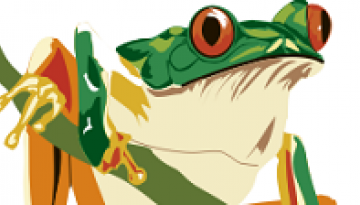15.02.2020 00:40 Date: February 15, 2020 Today’s Doodle commemorates Serbia's National Day, also known as Statehood Day. It marks the 106th anniversary of the First Serbian Uprising, which led to the adoption of the modern Serbian Constitution on this day in 1835. National Day is celebrated with memorial services, speeches by national dignitaries, and the proud display of the Serbian flag. The tricolor flag, depicted in the Doodle artwork, was established in 1882 and features the Serbian royal coat of arms that bears a shield overlaid on a double-headed eagle. The shield has a "C" in each corner, which is widely interpreted as the country’s solidarity and the phrase “Samo sloga Srbina spašava,” roughly translating to: “Only unity will save the Serbs.” In observance of the two-day holiday festivities, families get together to honor their national heritage, perhaps to enjoy traditional Serbian foods such as sarma or yummy burek . Happy dan državnosti Srbije! Location: Tags: , ,
15.02.2020 00:40 Date: February 15, 2020 Today’s Doodle celebrates the life of Polish social worker Irena Sendlerowa on her 110th birthday. This courageous humanitarian is credited for saving the lives of Jewish children from the Warsaw ghetto during World War II. She proved to be an excellent strategist and became a symbol of courage and justice by organising the help of those in need, regardless of nationality or religion. Irena Sendlerowa was born on this day in 1910 just outside the Polish capital of Warsaw. From her father’s work treating tuberculosis patients, Sendlerowa learned at an early age that one should always help those in need—no matter their race, religion, or financial status. Sendlerowa put those principles into practice, becoming a social worker with the Warsaw City Council in 1939. As World War II progressed, her position gave her unusual access to the Warsaw Ghetto, and she became determined to help save as many Jewish people as possible. Using ambulances, underground tunnels, and fake identities, Sendlerowa and her colleagues from a secret organisation called Żegota risked their lives to sneak hundreds of children to safety. As shown in the Doodle artwork, written records of the children and their families were buried in the jar under the apple tree, in hopes that the families could be reunited at the end of the war. Poland honored Sendlerowa’s selflessness in 2003, awarding her the Order of the White Eagle, and in 2008, she was nominated for a Nobel Peace Prize. Dziękuję, Irena Sendlerowa, for your bravery in saving the lives of many. Explore the life of Irena Sendlerowa on . Follow her journey as a humanitarian, social worker, and nurse serving in the Polish Underground during World War II in German-occupied Warsaw. Doodler Q&A Lydia Nichols Today’s Doodle was created by Doodler Lydia Nichols. Below, she shares some thoughts on the making of the Doodle: Q: When did you first learn about Irena Sendlerowa? Is there anything about her story that resonated with you? A: I first learned of Irena Sendlerowa while researching this Doodle, dismayed that I hadn't heard of her remarkable story sooner. Her moral fortitude is a timely reminder of how important it is to stand up for and with others in the face of persecution. Q: What was your creative approach for this Doodle? Why did you choose this approach? A: While I wanted the Doodle to reflect the seriousness of the war, I also wanted it to echo the hope and perseverance Sendlerowa displayed in her actions. When I learned that she would record the names of the children she smuggled out of the ghetto and bury them in a jar below an apple tree in her yard, I immediately thought the tree would serve as a hopeful symbol of life. Q: Did you draw inspiration from anything in particular for this Doodle? A: All inspiration came from Sendlerowa's story. Q: Are there any technical tricks you used to create this Doodle that you can share with young artists? A: The Doodle uses a limited palette of five colors that are overlaid and employed at varying opacities for visual richness. Q: What do you hope people will take away from this Doodle? A: I hope people are inspired by Sendlerowa to stand up for what is right, especially when doing so is difficult. We should all work to see and celebrate our common humanity and not let toxic ideas divide us. Early concepts and draft of the Doodle Location: Tags: , , , , ,
14.02.2020 19:01 Date: February 15, 2020 “To navigate against the current, these rare qualities are needed: a spirit of adventure, courage, perseverance, and passion.” —Nise da Silveira Today’s Doodle celebrates visionary Brazilian psychiatrist Nise da Silveira on her 115th birthday. One of the few women in medicine in her time, she boldly challenged established psychiatric practices, pioneering a more humane approach to patient care. Born on this day in 1905, in the northeastern city of Maceió, da Silveira completed her medical degree in 1926 at just 21 years old, as the only woman in her class. When she began work at a national psychiatric center in 1933, she was discouraged by the harsh medical procedures that doctors were relying upon to treat mental illnesses such as schizophrenia. Bravely challenging the status quo, da Silveira instead began to study and advocate for more compassionate rehabilitative treatments. She developed art workshops for patients to express the inner workings of their minds through painting and sculpting, and she later became one of the first to incorporate animals into her practice as “co-therapists.” Da Silveira’s new approach proved highly successful in her patients’ rehabilitation, paving the way for an entirely new way of thinking about psychiatric care. Da Silveira’s Museu de Imagens do Inconsciente remains open to this day, maintaining a collection of over 350,000 pieces of patient-created artwork. Her work has inspired countless others, leading to the establishment of therapeutic institutions both in Brazil and around the world. Early draft by artist Kevin Laughlin Location: , , , , , Tags: , , , , , , , , ,
13.02.2020 13:09 Date: February 14, 2020 Today, no matter where you are in the universe today, love is in the air! Whether your loved ones are lightyears away, or nearby, we hope no amount of space gets in the way of letting them know you're over the moon for them. Wishing all a stellar Valentine’s Day! Send a Valentine’s GIF to let someone know they're out of this world! Search for #GoogleDoodle in Gboard, GIF Keyboard, or your favorite . Location: Tags:
08.02.2020 01:42 Date: February 8, 2020 Location: Tags: , , , , , , ,
07.02.2020 12:39 Date: February 8, 2020 On the first full moon of the Lunar New Year, today’s Doodle celebrates the Taiwan Lantern Festival 2020. Festivities steeped in local traditions illuminate Taiwan as people shine a light on their wishes for good luck and prosperity in the new year. In 1990, Taiwan incorporated millennia-old Lantern Festival traditions with the native Pingxi Sky Lantern and Yanshui Fireworks Festivals, creating one of the most popular events in the nation. The annual customs are characterized by fireworks in the south and sky lanterns in the north. Throughout the capital of Taipei, festival-goers can expect to see beautiful lanterns of all sizes, from small ones for children to a towering paper structure at the heart of the celebrations. 元宵節快樂! Early concepts and draft of the Doodle Location: , , , , , , , , , , Tags: , , ,
06.02.2020 18:37 Date: February 7, 2020 Today’s Doodle, illustrated by Frankfurt-based guest artist , celebrates Jewish German poet and artist Else Lasker-Schüler, widely considered one of the greatest lyricists to write in the German language. On this day in 1937, a Swiss newspaper published her famous poem “Mein blaues Klavier” , which is referenced in today’s Doodle artwork by the piano keys depicted on the camel’s back, alongside other symbols of Lasker-Schüler’s life and work. Born in the western German town of Elberfeld on February 11th, 1869, Elisabeth Schüler was raised in a prominent Jewish family. Homeschooled by her mother, she was encouraged to experiment and explore her artistic interests, and in time, she began to develop her voice as a poet. In 1894, Schüler married Jonathan Lasker and moved to Berlin, where she later published her first poems. She became a well-known fixture in Berlin’s artistic circles, rubbing elbows in cafes with some of the city’s top literary figures. Bringing her vivid work to life, the eccentric Lasker-Schüler could be found dressed in flamboyant robes, assuming the alter ego of one of her vibrant characters, “Jusuf, Prince of Thebes,” depicted in today’s artwork. A prolific poet, Lasker-Schüler established herself as a leading German Expressionist voice and a major feature in the iconic Berlin literary journal Der Sturm , her verses frequently exploring themes of fantasy, loneliness, romance, and religion. Ironically, this master of the German language was forced to flee her home country in the leadup to World War II, eventually settling in Jerusalem. In recognition of her impact, in 1932 Lasker-Schüler received the Kleist Prize, widely considered the highest German literary honor at the time. Alles Gute zum Geburtstag, Else! Early concept sketch of the Doodle Location: , , , , , , , , , , Tags: , , , , , ,
06.02.2020 05:36 Date: February 6, 2020 Today’s Doodle honors the life and work of Cuban singer and guitarist María Teresa Vera, who also composed the nation’s rural folk song style, trova. Known as the Grande Dame of Cuban Music, she is widely regarded as one of the country’s most influential musicians. Born on this day in 1895 in Guanajay, Cuba, Vera picked up the guitar at a young age after becoming a part of a bohemian community of trova musicians. Known as “troubadours,” the wandering street entertainers taught Vera how to compose trova songs and perform the genre’s poetic lyrical vocals together with the guitar. In 1911, Vera performed her first concert in Havana‘s Politeama Grande theater. One of the first female voices of trova, Vera formed several successful duos and bands to perform original compositions along with her interpretations of other Cuban styles. Some of her songs became regular features on Havana’s radio stations, and her music helped to clear the path for the rise of popular Cuban music around the world in the 1930s and 40s. Throughout her career, she recorded close to two hundred songs, but those close to her say she could play more than a thousand. Her lifetime accomplishments in music have a lasting impact and inspired a tribute album, “A María Teresa Vera” , a collection of songs recorded to celebrate her 100th birthday. Doodler Q&A Erich Nagler Today’s Doodle was created by Doodler Erich Nagler. Below, he shares some thoughts on the making of the Doodle: Q: When did you first learn about María Teresa Vera? What aspect of her story resonated with you most? A: I first discovered more contemporary Cuban musicians like the folks from the Buena Vista Social Club. Later, I worked my way backward to find Vera, whose music influenced so many Cuban singers and songwriters who came after her. I was interested to discover that she was a ‘trova’ musician, or “trovador,” who traveled around Cuba playing her compositions and other popular songs. These traveling musicians helped to spread stories, styles, songs, and ideas throughout the tropical island nation and also around the world. Q: What was your creative approach for this Doodle? Why did you choose this approach? A: I was influenced by classic pre-modern graphics from Cuban posters and packaging design. These florid images capture and celebrate the island’s distinct culture and natural riches. With the colors and details, I tried to pay homage to María Teresa Vera as well as to Cuba, which her music so beautifully evokes. Q: Did you draw inspiration from anything in particular for this Doodle? A: I was lucky enough to travel around Cuba a few years ago. I was looking back at my travel photos and also drawing from my memory of that magnificent place. I enjoyed drawing the Malecón from Havana on the left where I spent some beautiful evenings, and also a more natural coastline , evocative of the shores I saw along the south of the island. Q: Are there any technical tricks you used to create this Doodle that you can share with young artists? A: Hands and guitars are hard to draw! Flowers are much more forgiving. I started by looking at a lot of reference images of Cuban graphics from the early 20th century when María Teresa Vera was in her artistic prime. I then started drawing some very small pencil sketches of what the overall composition might look like before working on a larger pencil drawing in my sketchpad. Lastly, I scanned the drawing into the computer and painted it digitally, like a coloring book. Q: What do you hope people will take away from this Doodle? A: I hope that people appreciate the beauty of Cuba and its culture. In particular, I hope they appreciate the island’s rich and varied musical traditions, of which María Teresa Vera played an integral and beautiful part. Early concepts and sketches of the Doodle Location: , , Tags: , , , ,
05.02.2020 14:03 Date: February 6, 2020 Today’s Doodle celebrates New Zealand’s Waitangi Day, a recognition of the signing of the nation’s founding document, the Treaty of Waitangi, on this day in 1840. To commemorate the country’s rich collection of bird fauna, the artwork depicts three of the nation’s endemic birds: the iconic flightless Kiwi in the centre, with the Tūī and the Kererū on either side. The islands of New Zealand are home to around 168 different native birds, and over half of these species cannot be found anywhere else in the world. With the Tūī, prized by the Māori people for their imitation skills using its two voice boxes, the Kererū and the Kiwi New Zealand’s avian community has developed unique characteristics from evolving on the isolated South Pacific island. Look up into the sky, or down to the ground, and enjoy these wonders of biodiversity. Happy Waitangi Day, New Zealand! Early concepts by artist Alyssa Winans Location: Tags: , , , , , , , ,
03.02.2020 21:17 Date: February 4, 2020 Location: Tags: , , ,
03.02.2020 16:31 Date: February 4, 2020 Location: , , , , , , , , , , , , Tags: , , , , , , , , , ,
01.02.2020 12:41 Date: February 2, 2020 Today’s Doodle honors the legacy of groundbreaking Scottish scientist Mary Somerville. On this day in 1826, one of Somerville’s experimental physics papers was read by the Royal Society of London, the UK’s National Science Academy. It became the first paper by a female author to be published in the prestigious Philosophical Transactions, the world’s oldest science publication, which is still active today. Born in Jedburgh, Scotland, on December 26th, 1790, into a distinguished family of humble means, Sommerville spent her early years helping her mother with chores around the house and enjoying nature in the family garden. At the age of 10, her father returned from overseas and decided to send her to a boarding school for a proper education. It was at boarding school that her art teacher explained how the fundamentals of painting could be traced back to Euclid’s Elements of Geometry. After acquiring a copy of the classic book, Somerville delved into teaching herself astronomy and mathematics. Following years of independent learning and research, she went on to publish her own scientific papers and books. In 1831, Somerville’s The Mechanism of the Heavens revolutionized the existing understanding of the solar system. This highly-praised essay laid the groundwork for her breakthrough book, The Connection of the Physical Sciences , which became among the best selling science books of the 19th century. Its third edition in 1836 provided the clues astronomer John Couch Adams needed to discover Neptune. In Connection, Somerville revealed the underlying links between the different disciplines of physical science, on which a reviewer of the book first coined the word “scientist” to describe this multidisciplinary approach. Not one to be pigeonholed, Somerville was also a vocal advocate for equal rights and the first person to sign the 1866 women’s suffrage petition. In 2016, the Institute of Physics celebrated Sommerville’s innovative thinking, which paved the way for the ever-increasing number of women in STEM fields, by introducing the Mary Somerville Medal and Prize for scientists who engage the public through their work. Meet the Scottish scientist, Mary Somerville on . Find out how her expertise led her to become the joint first female member of the Royal Astronomical Society. Doodler Q&A with Alyssa Winans Today’s Doodle was created by Doodler Alyssa Winans. Below, she shares some thoughts on the making of the Doodle: Q: Is there anything about Mary Somerville’s story that resonated with you? A: I admire her voracious appetite for learning. It’s inspiring that she was so deeply interested in such a wide array of topics. Q: What was your creative approach for this Doodle? Why did you choose this approach? A: I wanted to focus on a range of subjects that she contributed to. Most of my sketches revolve around different ways of showing the breadth of her knowledge. Q: Did you draw inspiration from anything in particular for this Doodle? A: I was especially inspired by how many books she wrote in a time when being a female writer was a challenge. I tried to sneak that into the art as well. Q: Are there any technical tricks you used to create this Doodle that you can share with young artists? A: I heavily relied on transparencies for the overlapping spheres in this Doodle! I think it helps give complexity and depth to an otherwise straightforward image. Q: What do you hope people will take away from this Doodle? A: I hope this Doodle will shine a light on Mary Somerville’s contributions, and people will feel inspired to explore a broad range of interests. Early concepts and draft of the Doodle Somerville focusing on different areas of study. The final artwork includes a nod to Somerville’s contribution to Neptune’s discovery, as well as the Somerville Crater. Location: , , , , , , , , , , , , , , , , , , Tags: , , , , ,
01.02.2020 05:43 Date: February 1, 2020 In honor of Black History Month, today’s diorama Doodle, created by Compton-based guest artist Karen Collins of the , remembers the Greensboro sit-in on its 60th anniversary. Organized by four Black college freshmen who became known as the “Greensboro Four,” this protest against segregation was a key part of the Civil Rights Movement, sparking a series of similar demonstrations throughout the nation. Inspired by Dr. Martin Luther King, Jr.’s nonviolent protests for racial equality, North Carolina A&T State University freshmen Ezell Blair Jr. , David Richmond, Franklin McCain, and Joseph McNeil, met at the local Woolworth’s department store in Greensboro, North Carolina on this day in 1960. The group requested service at the “whites-only” lunch counter—a common discriminatory and segregation practice by US businesses and institutions allowed by Jim Crow era laws. Denied service, the four continued to peacefully occupy their seats and refused to leave until the store closed at night. In the days and weeks that followed, the “Greensboro Four'' were joined by hundreds of other protesters. As the movement grew however, so too did the opposition, who routinely verbally harassed protesters with racial slurs—even resorting to spitting and throwing food at the nonviolent demonstrators. Undaunted, protestors were willing to repeat the sit-ins for as long as necessary, in hopes that the establishment would feel pressured to desegregate. As a result of the movement’s passion and resilience, Woolworth's fully integrated their dining area on July 25th, 1960. Catalyzing a much larger nonviolent sit-in movement across the country, the protests played a definitive role in the fight for civil rights. In its wake, segregation of public places became illegal under the Civil Rights Act of 1964. In recognition of this historic demonstration, the Woolworth’s Department Store in Greensboro is now the International Civil Rights Center and Museum, and part of the counter is housed at the Smithsonian National Museum of American History in Washington, D.C. Guest Artist Q&A Today’s Doodle was created by Compton-based guest artist Karen Collins of the . Below, she shares her thoughts behind the making of this Doodle: Q: Why was this topic meaningful to you personally? A: Creating art honoring the Greensboro sit-in is my way of giving back to today’s generation, especially to those who are in desperate times and troubles—to lift them up and teach them about their history. Q: What does the Greensboro sit-in mean to you? A: It was one of the sparks that led to national protest during the civil rights era for young people all over the country. It brought so many of us together to participate and stand up for our collective civil rights. Q: How did you get started with dioramas? A: They say, for artists, you have to see something ugly to create something beautiful. When tragedy hit my family, the anguish of what I could have done or should have done made me come up with the miniature museum, where I could draw from our history and share the positive perspective. Q: What do you hope people take away from your Doodle? A: I hope that everyone, especially young people, will go on to learn more about the sit-in and their personal histories as a whole. A lot of people sacrificed and died for the freedoms we enjoy today, and we should remember that and honor them. My goal is to show the strength of the people. We are not weak. We can keep going and strive to do better. One day I hope to open a physical space for all the museum’s dioramas so people and families of all backgrounds can come and learn about our history. to learn more about Karen’s story and what inspired her to create today’s Doodle. Photo Credit: Rebecca Veit The Greensboro sit-in has been searched more than any other sit-in in U.S. Google Trends history. Explore more of America’s most searched moments at . Location: , Tags: , , , , , ,
01.02.2020 03:13 Date: February 1, 2020 Today’s Doodle celebrates Brazilian anthropologist and activist Lélia Gonzalez, widely known as one of the most influential figures of the 20th-century black civil rights and feminist movements of Brazil. Born in Belo Horizonte on this day in 1935, at a young age Gonzalez moved to Rio de Janeiro and entered a high school that forced her to deny her black-indigenous heritage to be accepted by teachers and white classmates. Experiences such as this inspired Gonzalez to preserve her Afro-Brazilian culture and become the first in her family to pursue higher education. She continued on to earn her PhD in Social Anthropology and started her acclaimed career as a cultural studies professor. Gonzalez utilized her academic work to advocate against racial and gender discrimination and outside of universities, she was a dedicated activist. In 1978, she co-founded the Unified Black Movement which is considered to be among the most impactful black civil rights organizations in Brazil. Gonzalez began to travel around the world as a representative of the group and spread its message of social justice. She recognized the power of these movements to propagate change and co-founded Brazil’s first women’s rights group, the Nzinga Collective of Women, in 1983. Gonzalez’s passion to free the world of racism and sexism will be remembered by many generations to come. In honor of her landmark achievements, The United Nations of Brazil named a new building after Lélia Gonzalez in 2015. Early concepts and drafts by artist Olivia When Location: Tags:

















